Larry Larson named interim provost
BY ALEX NADIRASHVILI UNIVERSITY NEWS EDITOR
Larry Larson, professor of engineering, will serve as the University’s interim provost following the departure of Provost Richard Locke P’18 at the end of the 2022 calendar year, according to a University-wide announcement from President Christina Paxson P’19 Tuesday.
“Larry is a well-known and highly regarded member of the Brown com munity,” Paxson wrote. Through his “years of experience working closely with the provost and other academic leaders … he has a deep understanding of the people, systems and operations that make Brown function as a strong community.”
After over seven years as provost, Locke will leave his position to become the new vice president and dean of
Apple University, a school operated by the tech company that aims to teach employees Apple’s business culture and history, The Herald previously re ported. Larson, who was formerly dean of Brown’s School of Engineering, will serve as interim provost until a longterm provost steps into the role, which Paxson estimated will occur no later than July 1, 2023.
Larson is “a collaborative leader who is ideally positioned to help sustain mo mentum in support of Brown’s academic
UNIVERSITY NEWS
Fans reflect on World Cup amid controversies
Herald about how their watching hab its and emotional investment in the tournament are different this year, with many expressing uncertainty over how to balance their ethical concerns with their passion for soccer.
mission in the months between Provost Locke’s departure and the arrival of our next provost,” wrote University Spokesperson Brian Clark in an email to The Herald.
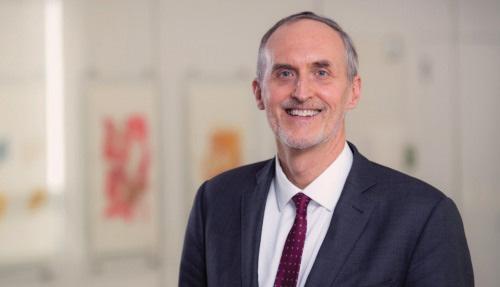
Larson will return to the Universi ty from his post-deanship sabbatical, which began last semester, and work with Locke throughout the month of December to ensure a “smooth lead ership transition,” Paxson wrote in the
UNIVERSITY
U. to employ union labor for projects over $25M
since 2013 required a Building Fu tures involvement in projects over $5 million.
BY ELYSEE BARAKETT SENIOR STAFF WRITER
With the signing of a memoran dum of understanding Nov. 14, the University has committed to em ploying all-union labor for any con struction project over $25 million for the next five years as part of an agreement with the Rhode Island Building and Construction Trades Council, according to a press re lease.
The memorandum also reiterates a preexisting requirement that 15% of labor hours be worked by graduates of Building Futures, a construction apprenticeship program in which low-income Rhode Islanders learn certain trades while working and earning wages. The University has
“This milestone marks Brown’s standing commitment to ensuring that campus development serves as a regional economic engine and a career catalyst for local construction workers,” Vice President for Facilities Management Michael Guglielmo Jr. said at the signing ceremony, which took place at the Granoff Center for the Creative Arts.
During the ceremony, President Christina Paxson P’19 said that the memorandum will ensure that the “strong relationship between Brown and the Building and Construction Trades Council will continue on into the coming years.” She said that the memorandum will govern the construction of the new integrated life sciences building in the Jewelry District. Currently, the Lindemann Performing Arts Center and the resi dence halls on Brook Street are being
Students talk hookup culture on campus
BY NICHOLAS MILLER SENIOR STAFF WRITER
The most-watched event on the global sporting calendar — the FIFA World Cup — kicked off this Sunday, when host-country Qatar fell to Ecuador 2-0. Held every four years, the month-long soccer tournament brings together the national teams of 32 countries. This year’s tournament takes place in November and December — a change from the tournament’s usual timing in June and July to avoid the extreme heat during the summers in Qatar.
The tournament has drawn sig nificant criticism due to Qatar’s anti-LGBTQ laws, widespread mis treatment of migrant workers tasked with constructing the tournament’s stadiums and alleged bribery involved in the host-selection process.
Amid this context, several soccer fans at the University spoke with The
FIFA awarded Qatar, an oil-rich country smaller than Connecticut, the 2022 tournament in 2010. The U.S. De partment of Justice later alleged that Qatari organizers bribed members of the FIFA Executive Committee.
“How on earth does a country that doesn’t have grass become the host of a World Cup?” said Professor of International and Public Affairs Mark Blyth, who called FIFA “a gigantically corrupt organization.”


“Once (FIFA) made that choice, you then have to ask how such a coun try which has no tradition of outdoor sports is going to do this,” Blyth said. “That means massive amounts of imported labor and the recycling of carbon wealth (will go) into global spectacle.”
Qatar has employed 30,000 foreign workers, most from Bangladesh, India, Nepal and the Philippines, to build
BY ELYSEE BARAKETT SENIOR STAFF WRITER

Gen Z is having less sex than prior gen erations, but for many young people at Brown, there remains a perception that everyone is participating in “hookup culture,” or casual sexual activity.
“There’s this idea of ‘it’s college,’ ” said monique jonath ’24. “Everyone is hooking up, and everyone’s loving it, … or they’re in a fantastic relationship and having sex all the time.” jonath said this idea creates a looming pressure to partake in hookup culture.
“Whenever there’s something that we want, we kind of assume that every one else has it,” they added.
The Herald spoke with several stu dents about the unspoken pressures that hookup culture cultivates, how often they should have sex and what that sex means — socially and person ally. Social norms, along with dating apps and parties, contribute to these pressures but often do not clarify what healthy intimacy and fulfilling sex can
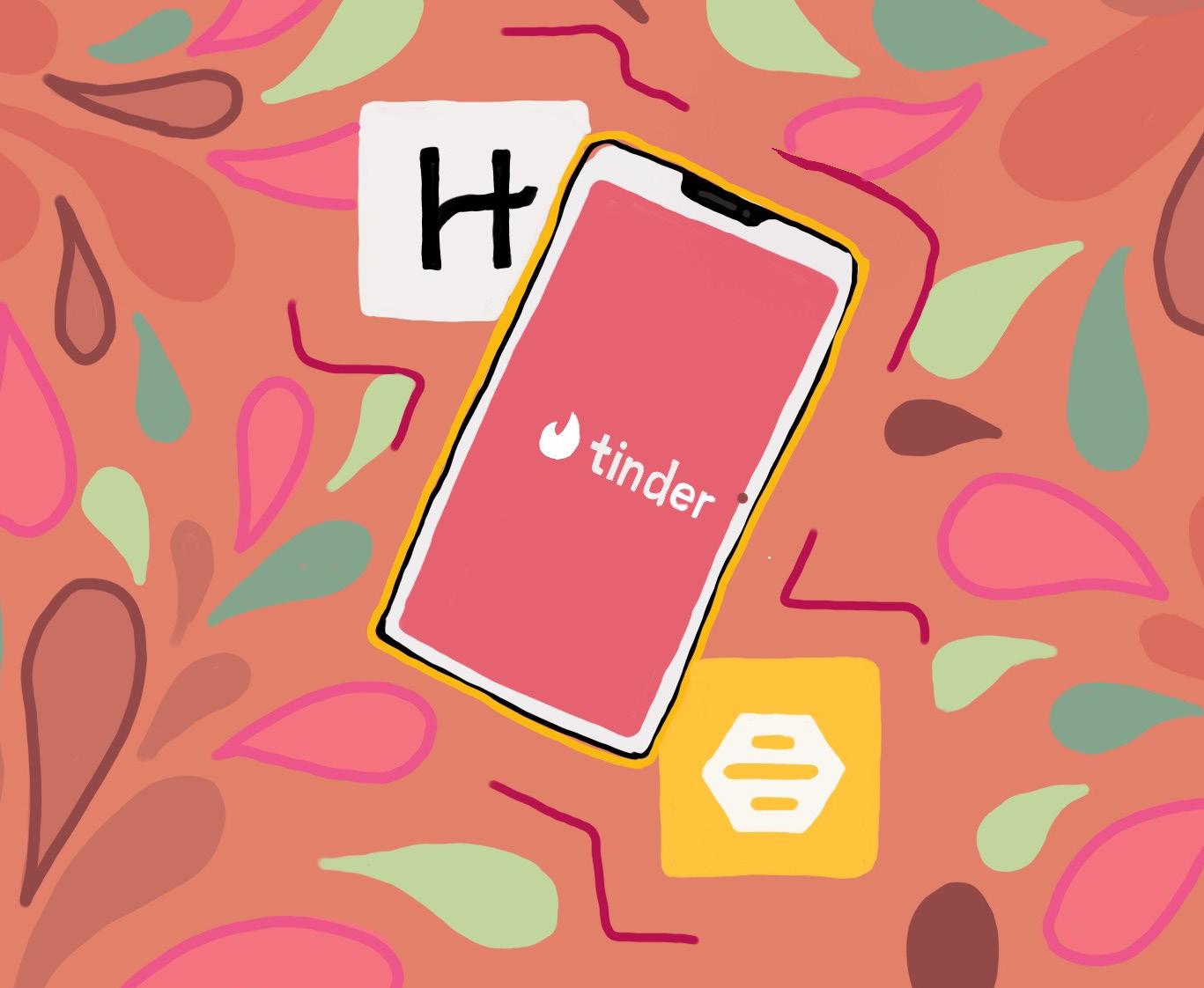
be, students said.
The Herald and the Brown Opinion Project’s fall 2022 poll found that 25% of students were in a long-term rela tionship. Out of students who reported being single, just under 40% said that they are looking for a relationship, al most a quarter reported looking for something casual and the remaining two-fifths said they are not looking for anything.
David Rangel, assistant professor of education, said that people’s overesti
mation of how many people are actually having casual sex comes from the broad definition of a hookup. “People think that everybody is hooking up because nobody really knows what it means,” he said. Since people believe that everyone is hooking up, they feel that they should be, too, he said.
Rangel teaches EDUC 1310: “Inside Higher Ed: Sex, Class and Admissions,” which spends three weeks unpacking
THE BROWN DAILY HERALD BROWNDAILYHERALD.COM SINCE 1891 WEDNESDAY, NOVEMBER 23, 2022 VOLUME CLVII, ISSUE 69 Professors encourage CS students to look beyond big-name tech companies Page 5 Five pieces of media that showcase Indigenous experiences Page 4 Psychological distress screeners assess heart disease risk Page 8 U. News Arts & Culture S & R 54 / 35 50 / 35 TODAY TOMORROW
leaves
economy Page 7 Commentary DESIGNED BY ELLA BUCHANAN ’25 DESIGNER GRAY MARTENS ’25 DESIGN EDITOR NEIL MEHTA ’25 DESIGN EDITOR
Peng ’26: A cashless system
people out of the
UNIVERSITY NEWS
Prof. of engineering will work with current provost to ensure smooth transition
COURTESY OF BROWN UNIVERSITY
Larry Larson, professor of engineering, is on the provost search committee, giving him insight into the expectations of his new position.
NEWS
Agreement continues U.’s work with apprenticeship program Building Futures
Students, professors discuss balancing love for tournament with ethical concerns
UNIVERSITY NEWS
Students, faculty talk about hookup culture, dating apps, perceptions of intimacy
SEE PROVOST PAGE 3 SEE HOOKUPS PAGE 2 SEE SOCCER PAGE 3 SEE UNION PAGE 2
EMILY SUONG / HERALD
hookup culture on college campuses. Hookup culture affects people’s think ing, even if they are not participating in it, he explained, characterizing it as an institutional and structural pattern that shapes what people feel they have to do.
Part of the pressure from hookup culture comes from how much people talk about it, jonath said. Talking about hooking up can be linked to shame, so there is a thrill in talking about it, they explained. There’s “wanting to have (sex), and then there’s also wanting to be wanted and wanting to show other people that you’re wanted,” they added.
The BDH/BOP poll results showed that seniors were more likely to be in long-term relationships, and the class of 2026 was most likely to be single and not looking for anything.
Mason Scurry ’25 said that he felt more pressure to hook up with people as a first-year. He explained that popular media creates an impression that people in college are always hooking up, but
he feels this pressure has “mellowed out” the longer he has been at college.
Olivia Hanley ’25 agreed, adding that hookup culture for first-years can feel more prominent because it is often students’ first time away from home.
Rangel said that gender also plays a role in the way people participate in and talk about hookup culture. Women generally have more societal constraints when talking about hookups, as they are more often shamed for perceived promiscuity, he explained. He added that patriarchy is present in hookup culture because men are usually more able to govern and get enjoyment out of casual sex.
Rangel spoke further about the gen der orgasm gap. “Across hookups and long-term relationships, men are more likely to have orgasms than women,” he said, “but that gap decreases as the level of the relationship increases.” He also added that women tend to talk about more relational aspects of hooking up while men emphasize the recreational aspects.
Students also discussed how dat ing apps and new technology play into hookup culture.
Scurry said that he used dating apps at home in Montana because it was harder to find people in his dating pool as a gay man. At Brown, he feels he does not need to use apps as much because there is a larger and more prominent gay community.
While Scurry said that he believes most people use dating apps to actually date people, Hanley said that she feels that apps are mostly used so that people can find hookups.
jonath said that they have used dat ing apps but that when they actually met up with someone they met on the platform, “it felt like I was trying to fabricate desire between the two of us, fabricate a history of wanting or of attraction that wasn’t actually there.”
Though they do not use dating apps frequently, jonath sometimes turns to online dating “to have a quick fix being wanted,” they said. “I feel like I stay on it, honestly, for validation every so
often,” they added.
Addison Kerwin ’24 said that hook up culture prompts people to be more casual in their intimacy. But she ex plained how that casualness can make it harder for people to have conversations about consent or sex. She added that her motivation for hookups can be fueled sometimes by “desire for validation” rather than actually wanting to have sex with someone.
Vicky Chen ’24 said that the students here are more “free spirited,” so she assumes that people would be more casual in their hookups. Calvin Kirk ’25 noted that the nature of a hookup “depends on the person.”
“I wish it was more relationships,” said Anjali Deepak ’23, “It’s incestuous at this point. Everyone’s hooked up with everyone, and I think that speaks to casualness as opposed to relationships.”

The University’s Sexual Health Awareness Group aims to help stu dents get the information they need to figure out “what their own values and beliefs about sexuality are,” said
Naomi Ninneman, associate director for empowerment and
BWell.
For Ninnenman, groups like SHAG are important because students in high er education still face informational gaps when it comes to sex education. These gaps usually come from inaccu rate information or stigmas that are used as fear tactics, she added.
SHAG provides students with a safe space to ask questions and learn more about intimacy, “rather than (feeling) shame for something that doesn’t need to be shameful in any way,” Ninnen man said, urging students to take a step back from hookup culture to make an independent decision about their relationships removed from external pressures.
“Sex should be something that is pleasurable and joyful. It can be some thing that’s healing,” Ninneman said. “Having a healthy sexuality is part of being a healthy person.”
completed under earlier project labor memorandums.
Negotiations for the memo randum only took “a few months,” Guglielmo wrote in an email to The Herald. The terms and conditions included in the memorandum had al ready been negotiated in prior project memorandums, he said, adding that the University has built 19 projects that cost over $25 million over the past two decades.
RIBCTC President Michael Sabi toni said that RIBCTC and Building Futures first approached the Univer sity about the memorandum in 2007, the year Building Futures began its operations. The organizations argued that the agreement made sense giv en Brown’s consistent construction schedule and the alignment of Build ing Futures’ purpose with Brown’s long-term mission of supporting Providence.
Sabitoni said that the memoran dum finally came to fruition after Building Futures had demonstrated the long-term success of their pro gram and proved that the memoran dum would benefit Brown, construc tion workers, the community and the local economy.
“I think everybody should be damn proud of what was accomplished,” he said.
Sabitoni explained that the memo randum’s application to projects over $25 million is significant: Projects worth more than $25 million are more complex, requiring more people and interactions with subcontractors, he said. While the memorandum applies to all projects over $25 million, the Uni versity and RIBCTC will still discuss the individual circumstances of each project, Sabitoni said.
Andrew Cortés, executive director of Building Futures, said that he knows the power of the organization’s apprentice ship model because it is what brought him out of poverty and into the middle class. “Many people, unfortunately, are
not in a position where they can pay to learn and then get their job. They need to earn and learn at the same time,” he said.
Building Futures has a mission to help workers from disadvantaged economic conditions, said Cortés. He reported that all participants are con sidered low-income upon entry into the program, 77% of their graduates are people of color, 10% are women and 40% are formerly incarcerated.
Cortés explained that Building Fu tures seeks to stop the “revolving door” of recidivism. For many formerly incar cerated people, “there’s no economic opportunity. They fall back to whatever it was that put them in prison in the first place,” he said.
A Rhode Island Department of Cor rections study from March 2021 found that three years after individuals were released, 47% returned to RIDOC as sentenced offenders.
“Somebody who finds a pathway to economic stability and a genuine career that takes you to the middle class and supports families doesn’t reoffend,” Cortés said, noting that less than 3% of program participants who were formerly incarcerated have returned to the criminal justice sys tem.
Sabitoni still expects Brown to work with Building Futures and the RIBCTC on projects that technically fall outside of the parties’ existing agreements. Brown has “a beautiful campus,” he
said. “We’ve built that campus for decades.”
The University has entered labor agreements on a case-by-case basis, but has used such agreements on proj ects worth over $350 million over the last 20 years, according to the press release.

Sabitoni said the memorandum shows the institutions’ commitment to each other and Brown’s commit ment to Providence’s future, adding that he hopes that it will encourage other institutions to enter into similar agreements.
Memorandums like this one allow union members to have more job secu rity and certainty, Cortés said.
Guglielmo wrote that the memo
randum will likely save the University two to three months on average per project.
Cortés said he hopes to expand Building Futures’ programming in the future to serve more community members.
“We have communities that really need economic opportunity,” Cortés said, adding that for every class of 16 apprentices, there are about 100 peo ple interested in learning through the program.
“Union tradesmen and women have worked on virtually every major capital construction project at Brown,” he add ed. “Project labor memorandums have also played and are playing a critical role in Brown’s growth.”
2 WEDNESDAY, NOVEMBER 23, 2022 THE BROWN DAILY HERALD | NEWS
prevention services at
HOOKUPS FROM PAGE 1
Additional reporting by Jacob Smollen.
UNION FROM PAGE 1
KATY PICKENS / HERALD
The memorandum, in which the University pledges to employ all-union labor for projects costing over $25 million, will govern the building of the new integrated life sciences building in the Jewelry District.
announcement.
Paxson added that she particularly appreciates Lawson’s willingness to interrupt his “well-earned” sabbatical following his time as dean to step in as provost. While his sabbatical has been a necessary time to refresh his scholarship and explore new intellectual opportunities, Larson wrote in an email to The Herald that he would “never hesitate to ‘step up’ and help the Brown community when asked.”
“Provost Locke and I have a wonder ful relationship, having worked close ly together all of these years,” Larson wrote, adding that he plans to meet with Locke regularly throughout December and has been invited to attend regular meetings with other members of the
provost’s office.
“Our goal together is to assure a smooth transition in the time ahead so that we continue the great trajectory that (Locke) has played such an import ant role in putting us on,” he added.
The provost search committee, con vened earlier this semester by Paxson, has made “great progress with an out standing slate of candidates,” Paxson wrote in the announcement. But it was unlikely that a new provost would be fully equipped to enter their position by Locke’s December departure, she added.
As a result, “I have decided to ap point an interim provost who can sus tain the strong trajectory of academic leadership for Brown through the spring semester,” Paxson wrote.
Larson is one of the nine members on the provost search committee, which
gives him further insight into the expec tations of his interim position, Paxson added.
Larson first came to the University on July 1, 2011 as the inaugural dean of the School of Engineering after the University elevated the Division of En gineering to a full-fledged school.
“Professor Larson has a strong re cord of achievement as an engineer in the private sector and as a researcher and administrator in the academy,” said former President Ruth J. Simmons in a press release when Larson’s initial appointment was announced. “He will be a skillful and committed leader as our new School of Engineering grows, develops and realizes its full potential.”
Larson served in his role as dean until June 30. Over his decade of lead ership, he expanded the University’s
biomedical and environmental engi neering research, grew the school’s external research funding and increased the number of tenure-track engineering faculty, The Herald previously reported.
Through this role, Larson gained experience in developing academic programs and research enterprises, managing capital improvements and creating strong learning communities, which will inform his actions as provost, according to Paxson.
During his time at the University, Larson has also had the chance to “work closely with a wide range of constituencies across campus,” in cluding students, faculty and staff from various academic centers across campus, he wrote. Having served on the President’s Cabinet throughout his tenure, Larson also has experience
working with senior leaders at the University, he added.
“All of that experience gave me a very good perspective on overall stra tegic planning and direction at Brown,” he wrote. “I have a clear sense of where we stand now in regard to fulfilling established goals, addressing areas that can be strengthened and considering new opportunities for the years ahead.”
Larson stated that he specifical ly wants to continue the University’s dedication to increasing its academ ic excellence, growing research and scholarship, supporting sustainability and strengthening its commitment to diversity, equity and inclusion.
“All of these things are really im portant to me,” Larson wrote, “and I hope we can launch and support new initiatives in all of these areas.”
eight new stadiums as well as a new air port, roads and public transportation as part of the $300 billion project. Human rights organizations allege that work ers have been exposed to horrific and sometimes fatal working conditions.
At least 6,500 migrant workers from India, Pakistan, Nepal, Bangladesh and Sri Lanka died in Qatar between when the tournament was awarded and Jan uary 2021, The Guardian reported last year. Students at Harvard held a march and vigil Sunday to honor the Nepali migrant workers who died while work ing on World Cup projects.
“As a world community, we’ve de cided the lives of thousands of migrants are not worth our time. That’s awful,” said Luka Willet ’24, who said he would have made plans to attend the tourna ment if it had been in another country.
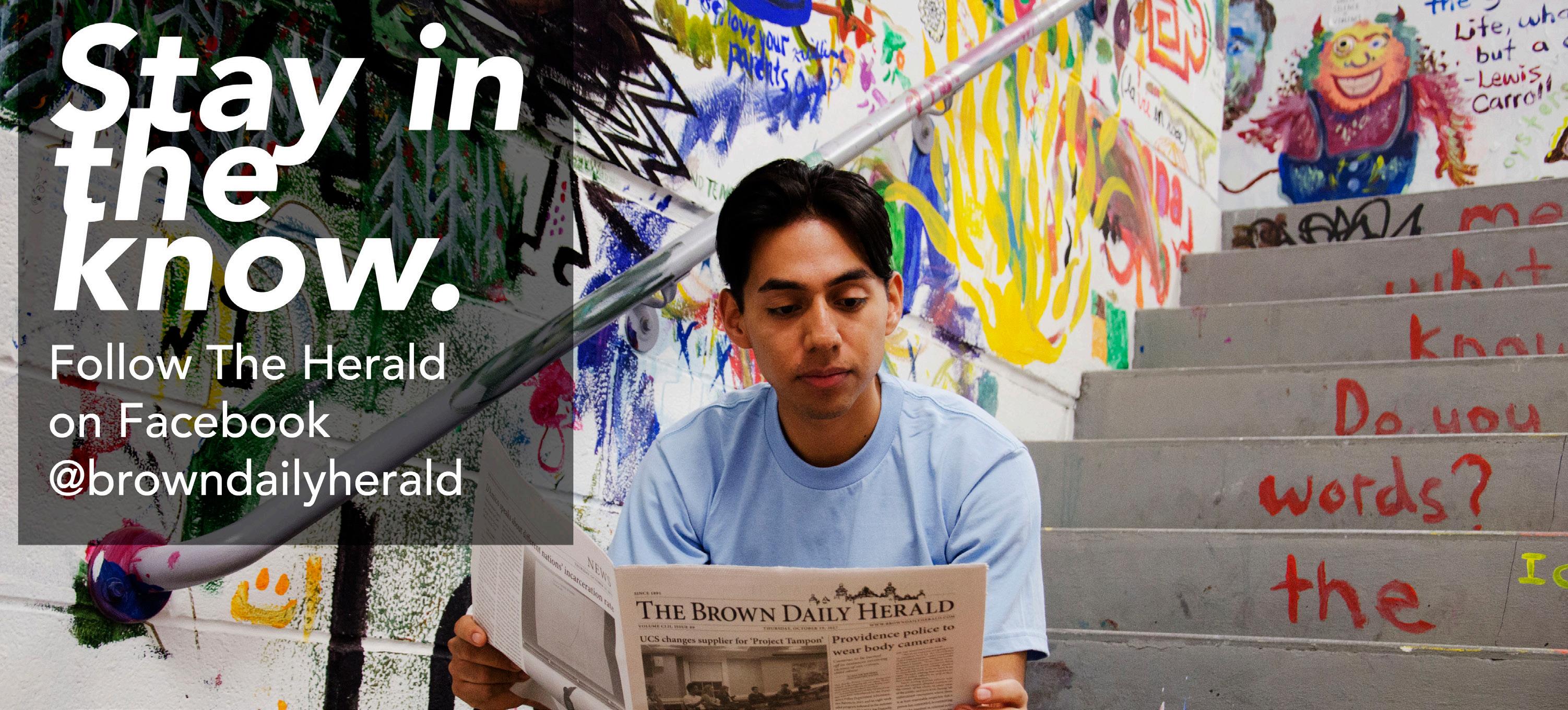
Another significant concern, fans said, is Qatar’s repression of LGBTQ rights. The country outlaws consen sual “same-sex sexual conduct,” and official Qatar World Cup Ambassador Khalid Salman said earlier this month that same-sex attraction is “damage in the mind.”
Additionally, some fans donning rainbows, a sign of LGBTQ support, have reported being denied entry into tournament games so far.
While the captains of seven Euro pean national teams planned to wear a rainbow armband in protest of Qatar’s LGBTQ record, FIFA threatened that those who do so will be given a yellow card. Instead, FIFA has proposed its own suggestions for more acceptable
The teams released a joint state ment Monday, saying they would comply with the ban on the rainbow armbands to avoid the competitive consequences.
That was the “breaking point” for T.K. Monford ’25, who has decided to boycott the tournament.
“There’s only so much influence that an individual person has on the organization of FIFA,” said Monford, who identifies as queer. “But (I want) to use the leverage that I (do) have.”
He said that means “not giving my money, not giving my viewership (and) not helping create revenue for an or ganization that is not doing enough to protect LGBTQ rights.”
“FIFA has a lot of power,” he said. “They should put more effort into mak ing sure that football is an inclusive space for all people.”
In addition to concern about pro viding financial support to FIFA, some students and spectators are worried that watching the tournament will unfairly boost Qatar’s image.
Multiple commentators have la beled Qatar’s host role as an attempt at “sportswashing,” a term referring to the use of large sporting events to clean up a country’s image.
“Despite their human rights viola tions being put out there for the entire world to see, Qatar will have an increase in reputation. … More people will watch the beautiful, shiny stadiums on TV and not know the background, and say, ‘wow that looks like a good place to visit,’”
Javier Nino-Sears ’25 said.
Nino-Sears, who started a World Cup bracket pool that encourages donations to human rights organizations, said that he was worried that more countries will use a similar sportswashing strategy if corruption among the FIFA governing body is not addressed. The bracket pool has raised more than $100 for human rights organizations, he said.
For many fans who spoke with The Herald, these ethical concerns have diminished their enthusiasm about a tournament they typically cherish.
Stuart Burrows, associate professor of English, said he remembers where he was for every tournament since the 1974 World Cup, which he first watched with his grandfather. “This is the first time that I’ve got next to no interest,” he said, citing concerns about Qatar’s human rights abuses, corruption and stance on LGBTQ rights. “That makes me really sad.”
Blyth said, “This is one you watch because it’s on the calendar and because you always watch it, you feel that you have to. There’s no sense of joy about this one.”
In Germany, concerns about corrup tion, human rights abuses and discrim ination have prompted fans to call for a widespread boycott of the tournament. But other than Monford, all soccer fans who spoke with The Herald said they are still planning on watching at least some of the games.
Sekai Tully-Carr ’24, who co-hosts a soccer podcast called S/NC, said that the World Cup could end up having a positive impact by drawing attention to Qatar’s human rights abuses.
“Everybody’s paying attention, players are speaking out and teams are speaking out and pundits are speaking out,” he said. “If the World Cup wasn’t being hosted in Qatar, that might not have happened.”
That will not solve any of what Blyth called “massive violations of human rights” — but ignoring the tournament would not do that either, he noted.
“The best thing would be that we watch the spectacle and the spectacle is seen as farce,” he said.
Chris Henderson, assistant teaching professor of public relations/sports me dia communication at the University of Rhode Island, studies the way sports are used to form community and resistance among marginalized groups and sup ports watching the tournament.
“I don’t think me not watching is going to do very much. I would much rather watch, be critical, find the things that I find interesting within it,” he said. “That’s also true with organizing and activism. … You’re going to get a whole lot more done if you actively engage with the structures, the problems.”
Henderson pointed to the Iranian team’s silence during its own national anthem in a display of support for the ongoing protests back home against the nation’s government as evidence of the good that can come out of the tournament.
“FIFA are the custodians of soccer. But the (community-based) connec tions we make through the game — that happens despite them, not because of them. They want to take that and lever age that and they always do. (But) there is always room within that for us to
disrupt, make connections and feel a part of communities,” Henderson said. “It’s not theirs, it’s ours.”
But for many, the decision to watch is simply a result of the irresistibility of seeing the best players of the world in their favorite sport play on their fa vorite national teams.
“It will be a hard moral quandary — I just love the sport so much,” Ni no-Sears said. “I think there is a world in which I can draw attention to the atrocities that are happening there while also enjoying the (soccer) and the athletes.”
“I wish I could say that I will not watch it, but I will,” Blyth said. “I’ll be highly selective and if the teams I have an interest in are knocked out, then I’m done. Because at some point, you’ve got to go, ‘no,’” he said, adding that he is aware of the contradiction of boycotting just some of the games.
“Hypocrisy allows you to live (in) two different states of the world at the same time,” he said. “I think that’s what everybody who watches the World Cup is going to have to do — and own up to it.”
For Monford, watching the tourna ment would let FIFA off the hook for the lack of support they have shown to both LGBTQ people and migrant workers.
“There are things FIFA should be do ing that they are not doing and I think we should hold them accountable,” he said. “If we are going to hold people to standards of (anti-discrimination), we have to do the same with organizations like FIFA who have the ability to cre ate huge impact and do a lot with the resources they have.”
WEDNESDAY, NOVEMBER 23, 2022 3 THE BROWN DAILY HERALD | NEWS
PROVOST FROM PAGE 1
armbands with slogans like, “Football unites the world,” “Share the meal” and “Bring the moves.”
SOCCER FROM PAGE 1
Five depictions of Indigenous people in film, literature, television
BY FINN KIRKPATRICK SENIOR STAFF WRITER
Indigenous people have been problem atically depicted in media with ignorant stereotypes for decades, from “Peter Pan” to “The Lone Ranger.” Often, Indig enous characters are played by non-In digenous actors, and Indigenous stories are written by non-Indigenous writers. Here are five works across film, literature and television that tell a different side of the Indigenous narrative, focusing on authentic stories that let Indigenous voices and experiences shine.
“The Rider” (2017)
Before director Chloé Zhao went on to achieve global acclaim for her 2020 film “Nomadland,” she had proven her self an exciting up-and-coming talent with “The Rider.” Filmed entirely on the Pine Ridge Reservation in South Dakota with an all-Lakota Sioux cast, “The Rid er” tells the story of Brady Blackburn, a once talented cowboy who has to give up the rodeo life and find a new pur pose after sustaining a horse-related head injury.
With its honesty and lack of exces sive flair, “The Rider” is a compelling watch. It’s a gut-wrenchingly emotional depiction of day-to-day life on a reser vation that has been forgotten by the rest of the country. It’s at times spe cific to the struggles on the Pine Ridge Reservation while also reaching to tell something more universal. Beautiful ly shot and wonderfully written, “The Rider” might be a little too subdued in tone to be a film with mass appeal, but it’s a must-watch to experience a slice of life that is not often depicted — but still a reality for many Americans today.
“Reservation Dogs” (2021-present)
Most depictions of Indigenous com munities in the media have traditionally taken one of two approaches — offen sive stereotypes, or a sole focus on the suffering experienced by Native com munities throughout history. While it is important to continue telling stories
about the hardships faced by Indige nous communities, there also needs to be room to tell authentic Native stories that are joyful, as guest columnist Crys tal Echo Hawk wrote in Variety.

“We need more Native stories,” she wrote. “We need characters and storylines that show our complexity, our humanity, our joy and our humor.”
Comedy-drama series “Reservation Dogs” provides exactly that.
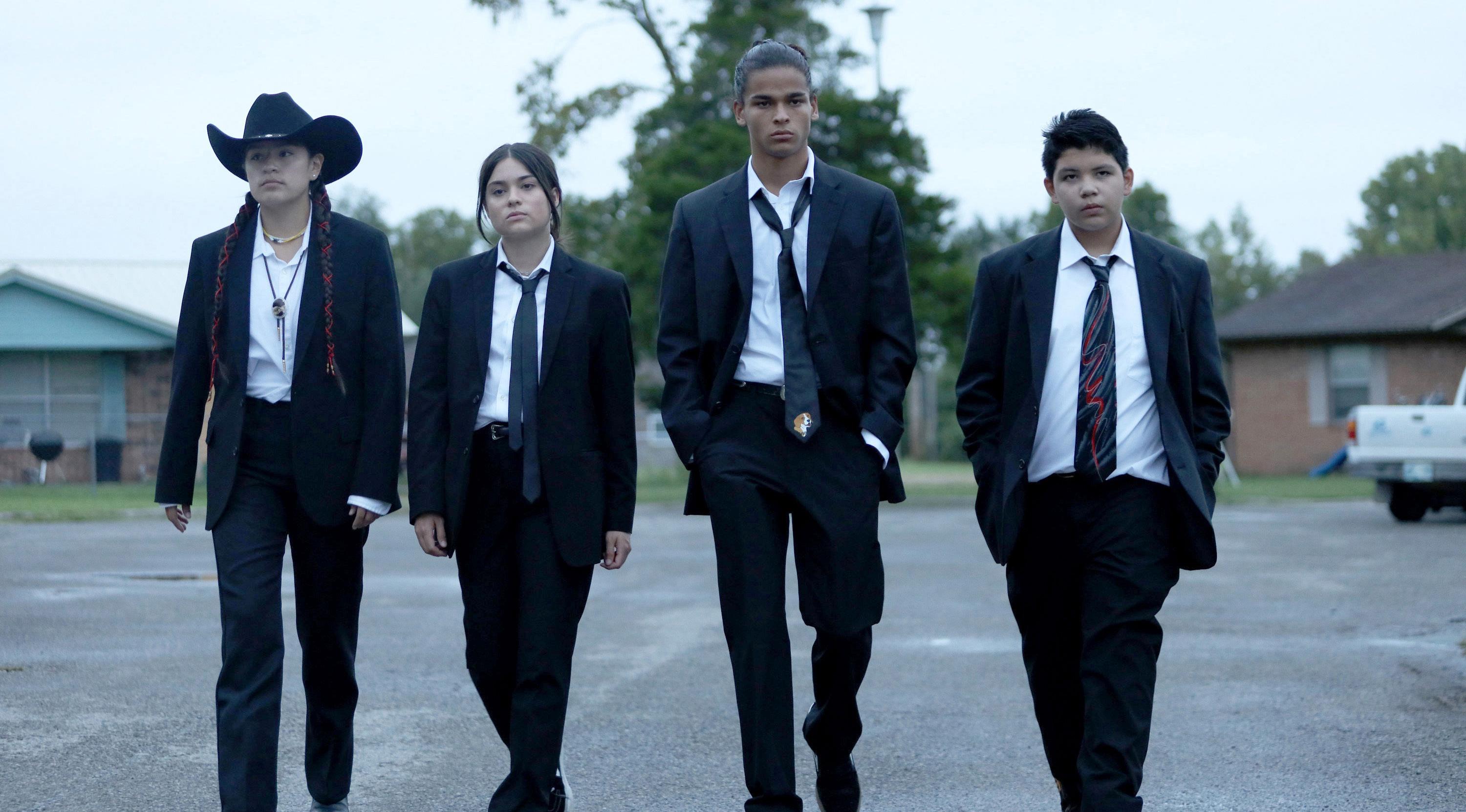
With an entirely Indigenous cre ative team, “Reservation Dogs” shat tered barriers when it began airing on Hulu in 2021. It follows four teenagers in Oklahoma a year after the death of one of their friends as they try to tie up loose ends at home before leaving for California. The show perfectly bal ances well-constructed and -executed humor with fully fleshed out emotion al narratives, grounding the series’s lightheartedness in something great er. “Reservation Dogs” has already aired for two seasons and has been renewed for a third. If it continues on the trajectory it has carved out for itself, the show will certainly go down as one of the most important works of Indigeneity in contemporary television.
“Smoke Signals” (1998)
“Smoke Signals” is another example of representation that takes a humor ous approach to Indigenous experi ences while still remaining conscious of the history of injustice experienced by Native groups. Released during a time where the white-savior narrative of films such as “Dances With Wolves” and “The Last of the Mohicans” were the status quo of Indigenous represen tation in film, “Smoke Signals” seeks to break from the stereotypes.
“Smoke Signals” follows two friends, Victor and Joseph, as they journey from their reservation in Idaho to Phoenix, Ariz. to retrieve the ashes of Victor’s father. The film excels in how it unpacks the com plexities of contemporary Indigenous identity — depicting characters that struggle with a wide range of human experiences, from alcoholism and vi olence to storytelling and romance. Victor and Joseph are in many ways polar opposites of one another, and the complicated nature of their friend ship reflects that. The resulting prod uct of their story is fun and enjoyable while remaining deeply informative,
with an ending that ties these tonal strings together to make something of true impact.
“There There” by Tommy Orange
While maybe an obvious choice giv en its monumental rise to the forefront of the contemporary literary canon, “There There” earned its reputation for a reason, and it’s a must-read for any one who hasn’t picked the book up yet.
“There There” is an ensemble narrative that follows a large cast of Indigenous people living in Oakland, Calif. At its core, the novel asks the question of what it means to be a Native American — a question it explores through first, second and third person perspectives.
Through the vehicle of a fiction al narrative, the novel unpacks urban Native American history, a cultural sub group that needs more representation. Orange does something incredible in weaving individual stories together to form a whole that is of immense substance. Keeping all of these parts together is Orange’s ability to write characters that feel real, well-rounded and distinct from one another. It’s one of those novels that remains with you after reading, as the images and ideas
it paints are too impactful to just be forgotten the next day.
“House Made of Dawn” by N. Scott Mamaday
“House Made of Dawn” is widely regarded as one of the most important works of Native American literature. The novel helped carve a place for Indige nous voices in a more mainstream con text after winning the 1969 Pulitzer Prize for Fiction. Its win sparked what critic Kenneth Lincoln described as the “Native American Renaissance.” The novel uses visceral and poetic language that is able to get at the core of the emotional depth of the modern Native experience.
“House Made of Dawn” follows the emotionally-tormented World War II veteran Abel as he returns home to a reservation in New Mexico. Mama day incorporates elements of Navajo mythology throughout Abel’s jour ney as he reconnects with an identity that has been fragmented between the traditions of his culture and the demands of post-war industrializa tion. It’s at times tragic, but accents of hope glimmer throughout Abel’s emotional journey, making it all feel worth it at the end.
4 WEDNESDAY, NOVEMBER 23, 2022 THE BROWN DAILY HERALD | NEWS CALENDAR NOVEMBER S F Th W Tu M S 9 8 7 10 4 5 6 16 15 14 17 12 13 11 23 22 21 24 19 20 18 27 25 26 2 3 1 28
ARTS & CULTURE
Stories defy ignorant stereotypes, center perspectives of Native American people
COURTESY OF HULU
GRAY MARTENS / HERALD 29 30
“Reservation Dogs,” which follows four teenagers in Oklahoma, shattered barriers when it began airing on Hulu in 2021. The show features an entirely Indigenous creative team and has been renewed for a third season.
The Herald will resume print Monday, Nov. 28, 2022.
Amid tech hiring freeze, CS professors urge concentrators to stay calm
even non-tech companies still need qualified staff to build and manage their tech operations, as today nearly every company is, “at some level, a tech company.”
BY SAM LEVINE SENIOR STAFF WRITER
This fall, several major tech com panies announced layoffs and hir ing freezes. Meta, Microsoft and Al phabet have all slowed the pace of their hiring, while companies like Snap, Stripe and Lyft have either cut or have plans to cut between 13% and 20% of their staff, The New York Times reported. Amazon also announced that it would pause its corporate hiring, citing an “uncer tain” economy and “how many peo ple (they) have hired in the last few years,” according to an internal note sent to employees.
Industry giants like Meta, Twitter and Stripe have openly admitted to hiring too many workers over the last two years. In explaining its decision to slow hiring, Alphabet reported de creases in ad revenues across their platforms.
But for computer science concen trators looking to start their careers after graduation, the slowdown should not be cause for excessive concern, two CS professors told The Herald. While the industry’s most prominent companies are in a volatile position, the industry as a whole is healthy, they said.
“It is very easy to panic here,” said Shriram Krishnamurthi, professor of computer science. National media coverage tends to center on the most prominent tech companies, Krish namurthi said, meaning that news of their hiring slowdowns shapes the narrative about the entire industry.
Krishnamurthi said he is not wor ried about the broader tech job mar ket, pointing to “thousands” of smaller companies that are actively hiring. And
While major tech companies are either feeling the after effects of slowed advertising spending or cor recting for overhiring, the broader in dustry is not in crisis as many smaller companies have grown at more steady rates, Krishnamurthi said. “There is no shortage of jobs at (these) companies,” he added.
Nationally, college students who study computer science fare better in their early careers than almost any other field of study, according to data from the Federal Reserve Bank of New York. At Brown, computer science con centrators report higher median earn ings — $184,762 — than in any other field of study. According to 2019 data from the U.S. Department of Education, Brown CS graduates fare better than those from any other school, receiving a median salary of $141,100 one year after graduation.
Krishnamurthi acknowledged that the job market may seem “complicat ed” right now for students. “But ‘it’s complicated’ is different from ‘oh, my God, the entire industry has shut down and everything has gone to hell,’ ” he said.
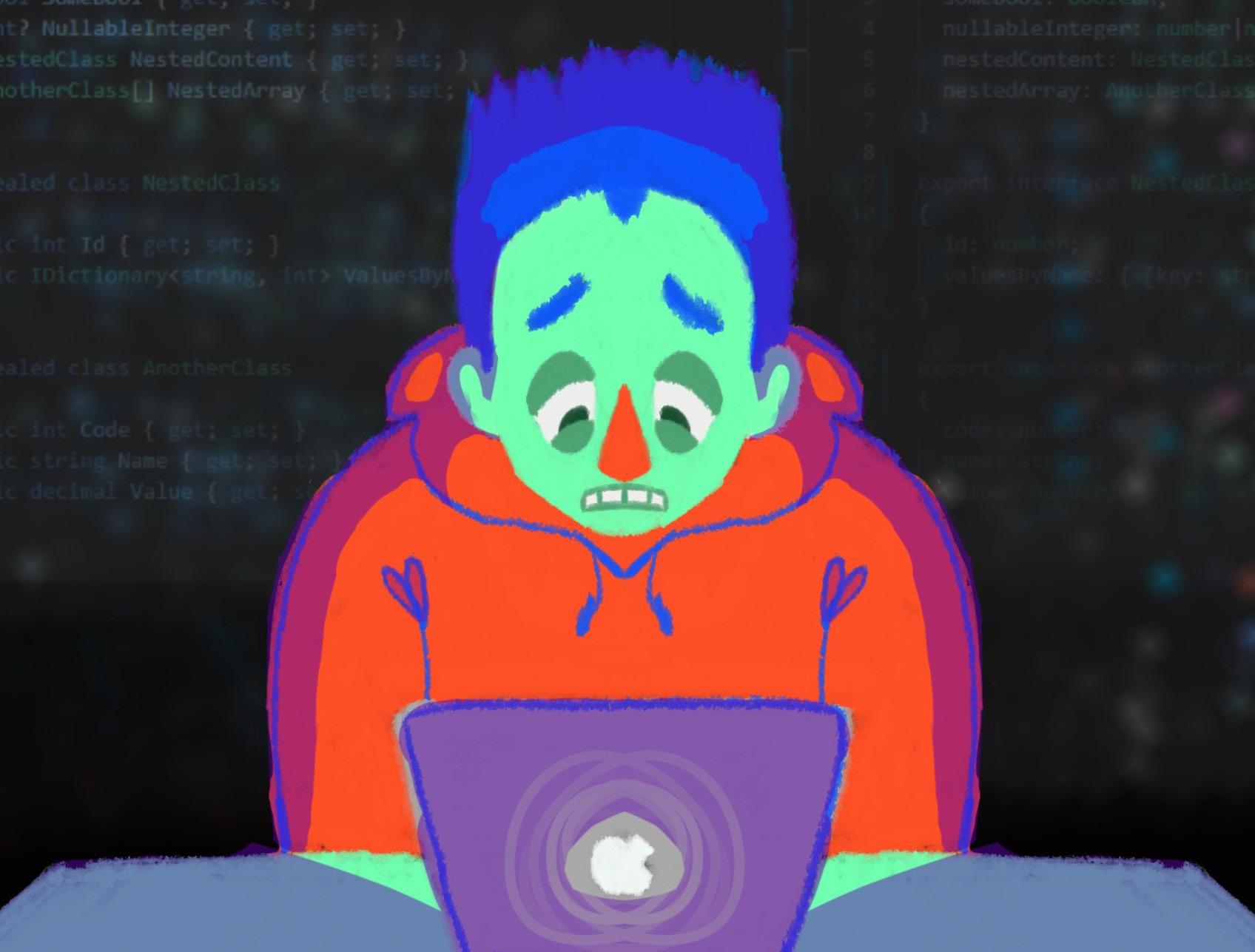
Krishnamurthi noted that he is a computer science professor and not an economist, meaning that he can not predict broader macroeconomic trends. Norm Meyrowitz ’81, adjunct professor of computer science, echoed that students should not panic.
“Take deep breaths and learn not to look at the peak highs or the lowest lows,” Meyrowitz advised. “If you can’t work at Facebook or Google, you are still valuable.”
For Krishnamurthi, helping stu dents navigate the hiring slowdown is a matter of changing their perspective on the job market, something he has already been working on within the CS department, he said. He wants students
to look beyond the few major compa nies that dominate perceptions of the tech industry and instead consider jobs at other companies that he believes are just as innovative and exciting.
Meyrowitz offered similar advice, encouraging students to reflect on their passions and “go after com panies that really pique (their) in terest, as opposed to just the usual suspects.”
After seeing the news about hiring freezes, Krishnamurthi collaborated with CareerLAB to compile resources for CS students looking for guidance on finding jobs and internships. The resources, which were shared in a Nov. 8 email from Kathi Fisler, associate director of the CS undergraduate program, include links to several job posting platforms and the Brown CS Facebook group that connects cur rent undergraduates with alumni. The email, which was reviewed by The Herald, also advised that “many smaller companies are still hiring” and
included the link to a Twitter thread in which scores of people shared links to job postings at smaller tech com panies.
Krishnamurthi also highlighted CareerLAB as a resource for CS stu dents.
“As the tech job market has changed, CareerLAB’s career coun selors have been meeting one-on-one with students … to discuss their chal lenges and concerns,” Amy Tarbox, associate director of career counseling and campus partnerships, wrote in an email to The Herald. The CareerLAB website also offers recorded workshops on topics such as resume and cover letter creation, as well as job searching and interviewing, she added.
In response to the recent layoffs in the tech and nonprofit sectors, the Office of Alumni Relations has intro duced a rapid-response program aimed at connecting alumni with one another to provide advice and support, said Zack Langway ’09, vice president of
alumni relations.
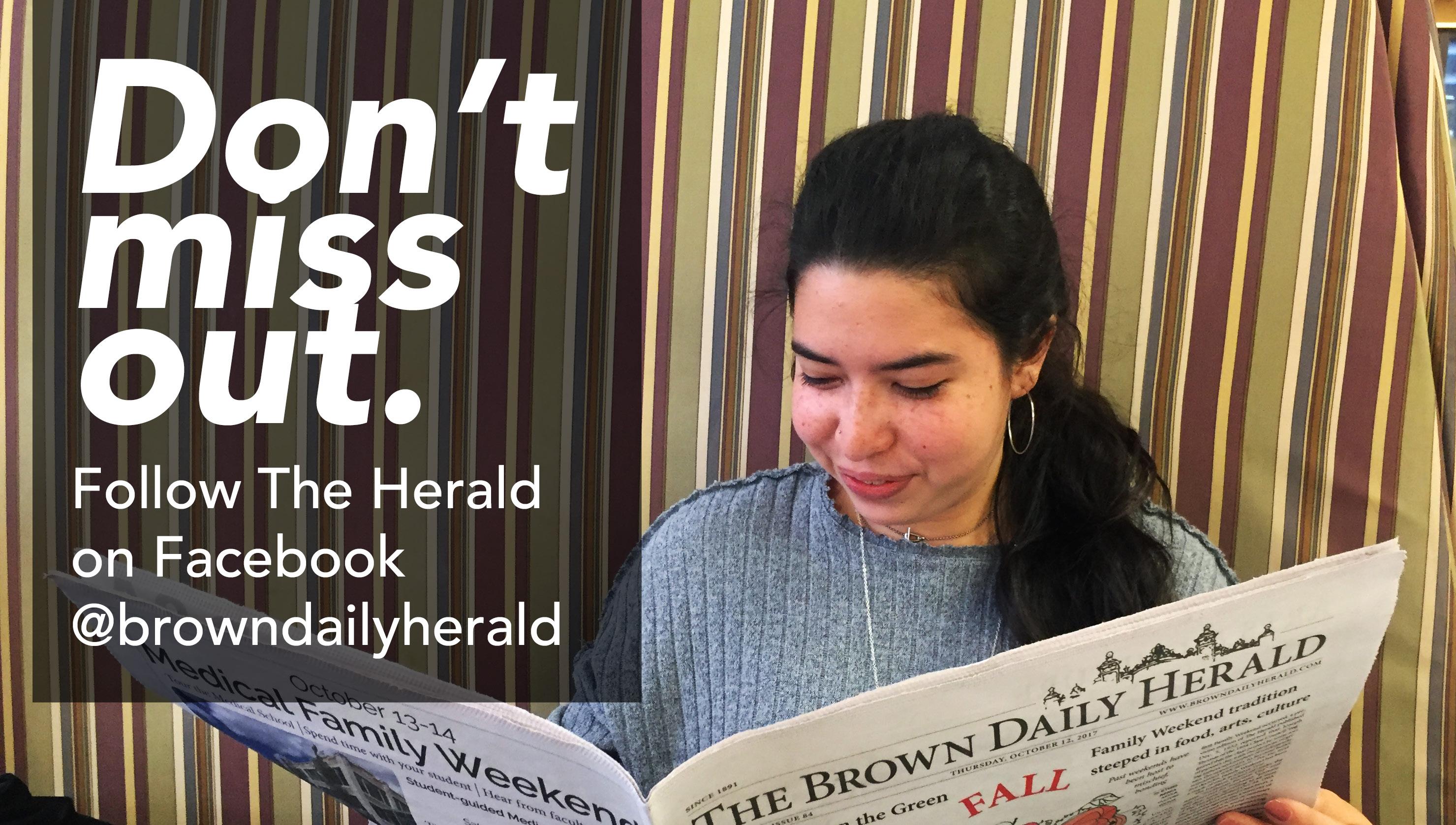
“We see the anxiety expressed by alums, and we wanted to get something quickly to our communities so that they are able to build connections and skills to move them forward to their next step,” Langway said.
To participate in the program, alumni can fill out an interest form indicating whether they would like to give or receive support, and what type of support they are seeking or able to offer. Langway said response to the form has been “phenomenal” since it was sent out to the alumni community via email Monday morning.
Langway also emphasized that the alumni community is a great resource for current students as they launch their careers. “Undergraduates today can expect to be warmly welcomed into the Brown alumni community and (receive) all kinds of support, guid ance and mentorship from their fellow Brown alums as they are making those first steps,” he said.
WEDNESDAY, NOVEMBER 23, 2022 5 THE BROWN DAILY HERALD | NEWS
UNIVERSITY NEWS
Students can consider smaller companies, use U. resources, two professors say
ELLA BUCHANAN / HERALD
Siddiqui ’24: U. should subsidize electric scooters and bikes
In 2018, Providence launched its Shared Micro mobility Program to improve affordable travel by adding electric scooters and bikes to Prov idence’s streets. Over the last few months, the number of electric bikes and scooters in Prov idence has increased, with two new companies joining the program in October. At the same time, Spin, another electric scooter and bike company, has expanded the number of elec tric bikes available in Providence, giving Brown students plenty of environmentally friendly commuting options. Electric bikes and scoot ers have seen wide use since being introduced in Providence, with over 600,000 Spin trips re corded in the city over the past year as of Octo ber. Currently, the price of renting electric bikes remains low at just 29 cents per minute, plus $1 to unlock for use. In order to further encourage the use of electric bikes and scooters among students, the University should work with an electric scooter company to fully subsidize the cost of riding these electric vehicles.
The University has already collaborated with Spin to implement speed and parking re strictions on campus and to educate students on safe driving during orientation. Subsidizing rides would increase the demand for Spin scoot ers, improve awareness of safer riding practices and give students more flexibility in transporta tion choices.
Subsidizing Spin scooters would also further
foster an ever-growing “scooter culture” among Brown students. Students already reap many benefits from the prevalence of Spin scooters — they’re fast, going up to 15 miles per hour — which allows for speedy commutes, especially for students who live off campus, or who need
tation, especially for students concerned about bike theft.
Granted, electric scooters come with cer tain safety concerns. People are allowed to drive their scooters on sidewalks, which can poten tially lead to collisions with pedestrians. How
to travel downtown. More specifically, Spin scooters are easily accessible; users can easily track down available scooters on Google Maps and see their charge levels. It’s also quite easy to join — users can simply download an app and fill out their personal details. While elec tric scooters can cost around $300 and bicycles can cost upwards of $100, providing scooters can be an easy way of guaranteeing transpor
ever, Brown has already attempted to counter these problems through its aforementioned partnership with Spin and could continue to provide safety training to students.
Another potential concern, drunk riding, can also be managed through responsible measures intended to protect public safety. For example, Spin scooters are generally operational between the hours of 6 a.m. and 9 p.m. and inactive
during the late hours of the night. This restric tion limits access to e-scooters at times when students may be more likely to be intoxicated. In addition, Spin executives have said that the company has considered implementing reaction time sobriety tests to discourage drunk riding. While subsidizing electric scooters and bikes does not come challenge-free, many of the con cerns about these electric vehicles can be man aged. The University has already taken several steps to improve travel efficiency on campus. With the Brown University Shuttle, on-call shuttle service and Rhode Island Public Tran sit Authority U-Pass Program, which subsidiz es bus fares for Brown students, the University already offers several transportation options for students. However, subsidizing the cost of elec tric scooters is one more step the University can take to help increase the accessibility of student travel. Providing another effective alternative for travel on campus should be seen not only as a desirable goal, but one the University should support financially.

Taha Siddiqui ’24 can be reached at mo hammed_siddiqui@brown.edu. Please send responses to this opinion to letters@brown dailyherald.com and other op-eds to opin ions@browndailyherald.com.
Submissions: The Brown Daily Herald publishes submissions in the form of op-eds and letters to the editor. Op-eds are typically between 750 and 1000 words, though we will consider submissions between 500 and 1200 words. Letters to the editor should be around 250 words. While letters to the editor respond to an article or column that has appeared in The Herald, op-eds usually prompt new discussions on campus or frame new arguments about current discourse.

All submissions to The Herald cannot have been previously published elsewhere (in print or online — including personal blogs and social media), and they must be exclusive to The Herald.

Submissions must include no more than two individual authors. If there are more than two original authors, The Herald can acknowledge the authors in a statement at the end of the letter or oped, but the byline can only include up to two names. The Herald will not publish submissions authored by groups. The Herald does not publish anonymous submissions. If you feel your circumstances prevent you from submitting an op-ed or letter with your name, please email herald@ browndailyherald.com to explain your situation.
You can submit op-eds to opinions@browndailyherald.com and letters to letters@browndailyherald. com. When you email your submission, please include (1) your full name, (2) an evening or mobile phone number in case your submission is chosen for publication and (3) any affiliation with Brown University or any institution or organization relevant to the content of your submission.
Commentary:
Corrections:
The Brown Daily Herald, Inc. is a financially independent, nonprofit media organization bringing you The Brown Daily Herald and Post- Magazine. The Brown Daily Herald has served the Brown University community daily since 1891. It is published Monday through Friday during the academic year, excluding vacations, once during Commencement and once during Orientation by The Brown Daily Herald, Inc. Single copy free for each member of the community. Subscription prices: $200 one year daily, $100 one semester daily.
WEDNESDAY, NOVEMBER 23, 2022 THE BROWN DAILY HERALD | COMMENTARY
Copyright 2022 by The Brown Daily Herald, Inc. All rights reserved.
Please send in submissions at least 24 hours in advance of your desired publication date. The Herald only publishes submissions while it is in print. The Herald reserves the right to edit all submissions. If your piece is considered for publication, an editor will contact you to discuss potential changes to your submission.
The editorial is the majority opinion of the editorial page board of The Brown Daily Herald. The editorial viewpoint does not necessarily reflect the views of The Brown Daily Herald, Inc. Columns, letters and comics reflect the opinions of their authors only.
information possible. Corrections may be submitted up to seven calendar days after publication. Periodicals postage paid at Providence, R.I. Postmaster: Please send corrections to P.O. Box 2538, Providence, RI 02906.
The Brown Daily Herald, Inc. reserves the right to accept or decline any advertisement at its discretion. 6 88 Benevolent, Providence, RI (401) 351-3372 www.browndailyherald.com Editorial: herald@browndailyherald.com Advertising: advertising@browndailyherald.com THE BROWN DAILY HERALD SINCE 1891 @the_herald facebook.com/browndailyherald @browndailyherald @browndailyherald 132nd Editorial Board Editor-in-Chief Ben Glickman Managing Editors Benjamin Pollard Caelyn Pender Senior Editors Katie Chen Gaya Gupta Jack Walker post-magazine Editor-in-Chief Kyoko Leaman News Metro Editors Emma Gardner Ashley Guo Oliver Kneen Katy Pickens Sameer Sinha Science & Research Editors Kathleen Meininger Gabriella Vulakh Arts & Culture Editors Rebecca Carcieri Laura David Aalia Jagwani Sports Editor Peter Swope University News Editors Emily Faulhaber Will Kubzansky Caleb Lazar Alex Nadirashvili Stella Olken-Hunt Shilpa Sajja Kaitlyn Torres Digital News Director of Technology Jed Fox Opinions Editorial Page Board Editor Johnny Ren Head Opinions Editor Augustus Bayard Opinions Editor Anika Bahl Bliss Han Melissa Liu Jackson McGough Alissa Simon Multimedia Illustration Chief Ashley Choi Photo Chiefs Danielle Emerson Julia Grossman Photo Editors Elsa Choi-Hausman Mathieu Greco Rocky Mattos-Canedo Dana Richie Social Media Chief Alejandro Ingkavet Social Media Editor Sahil Balani Production Copy Desk Chief Lily Lustig Assistant Copy Desk Chief Brendan McMahon Design Chief Raphael Li Design Editors Sirine Benali Maddy Cherr Julia Grossman Gray Martens Neil Mehta Business General Managers Alexandra Cerda Sophie Silverman Andrew Willwerth Sales Directors Joe Belfield Alexander Zhou Finance Director Eli Pullaro
The Brown Daily Herald is committed to providing the Brown University community with the most accurate
Advertising:
“In order to further encourage the use of electric bikes and scooters, the University should work with Spin to fully subsidize the cost of riding these electric vehicles.”
Peng ’26: Someone always pays the price for going cashless
“Cash or card?”
We’ve become so accustomed to hearing this question, asking us to pick our preferred payment method. But how would we feel if this commonly asked question suddenly became irrelevant?
The erasure of cash is not a hypotheti cal scenario. Bringing a new social aversion to physical contact and prolonged transactions, the COVID-19 pandemic has accelerated the shift from cash to digital payment. Stores have allowed customers to pay in cash for years, but an increasing number of businesses are now doing the opposite, favoring digital payment methods and eliminating cash transactions al together. There are even proposals for entirely cashless cities. However, as we move toward a cashless future, it is crucial to recognize that going cashless is not free. Someone always pays the price.
Let’s face it: Operating in cash is cumber some for consumers, businesses and banks. Personally, I like to avoid scrounging for pen nies at the bottom of my bag or standing be hind someone in line who does. Cash comes with its fair share of frustrations, but the costs associated with the payment method are per haps more substantial. The technical issues associated with transporting and dealing with cash can cost retailers anywhere between 4.7% to 15.3% of the cash value earned, outweighing the cost of credit card fees on the same trans actions. When I worked as a cashier at my local bubble tea store, I often hoped that custom ers would pay with cards so I wouldn’t have to unravel coin rolls or recount bills at the end of my shift.
Despite the efficiency and ease of card pay ment, however, we must take into account groups that get shut out from a cashless system. Teenagers, low-income families and minority groups are more likely to use cash. This is be cause cash itself is accessible, anonymous and indiscriminate, whereas credit cards require users to have a bank account — which not ev
ic and card payments may appear procedurally simple to younger generations, they involve a fundamental change in habits for people ac customed to the tangibility of cash. During my time as a cashier, an elderly man came in every other day to order tea and use the store’s re stroom. He could only pay in cash. Around 70% of boomers and those 72 and older prefer cash,
side is the omnipresent threat of cyber attacks. Compared to bank robberies, cyber attacks can be harder to predict and protect against. In March 2019, a solo hacker managed to steal 106 million people’s personal details in a matter of days. This attack was only noticed by Capital One a few months after the fact.
eryone does. Approximately 5.9 million “U.S. households were ‘unbanked’ in 2021, meaning no one in the household had a checking or sav ings account,” according to the Federal Deposit Insurance Corporation. Even individuals who do hold cards may not necessarily want to in crease their credit card debt, instead preferring to use cash. It is these concerns around equity and accessibility that have caused legislators across the country, including in Rhode Island in 2019, to ban cashless stores at the state and local levels.
Moreover, cash might be the only option for some elders in our community. While electron
according to AARP. This preference could be for various reasons, such as concerns over spending control and distrust or unfamiliarity with new er technology. The transition toward a cashless future may exclude these elders from the econ omy.
Even for those of us who enjoy the ease of credit and debit cards, there are still notable drawbacks to the cashless system. For one, in exchange for convenience, customers often pay with their privacy. With every payment record ed digitally, the electronic money trails you leave may allow companies and governments to harvest your personal data. Another down
When paying with a card alone, you could also experience the cashless effect, or the ten dency to be much looser with money when it isn’t tangible. While we may feel the “pain of payment” when we part with physical cash, we often subconsciously forget that credit card swipes are money we later have to repay. This cognitive bias means we have less difficul ty parting with money when it only exists in a hypothetical, digital form. The cashless effect can cause us to spend more than we would have if we had to make that purchase with physical cash. This Black Friday, as merchants flood our social media feeds with promotions and hefty discounts, we must be mindful of our purchase decisions and avoid overspending with the easy swipe of a card.
Going cashless may sound like a sleek step forward, but it doesn’t translate into progress for all. As the economy is increasingly digitized, we must both reflect on our own spending hab its and ensure that the vulnerable in society aren’t left behind.
Christina Peng ’26 can be reached at christi na_peng@brown.edu. Please send respons es to this opinion to letters@browndaily herald.com and other op-eds to opinions@ browndailyherald.com.

If
to succeed in the beauty industry, you can bank on women’s insecurities.
Today, the still-growing industry is worth $532 billion globally. The United States has the largest beauty market in the world, and the in dustry’s monetary success is contingent on the unethical exploitation of the vulnerabilities of women.
Many beauty companies, despite marketing almost solely to women, have been created by men. For decades, beauty standards have been curated by the male gaze. The predecessor of the blow dryer was created in 1888 by Alexan dre-Ferdinand Godefroy. Mascara was invent ed by Eugéne Rimmel in the 19th century. The founder of Sephora was Dominique Mandon naud, while Revlon was founded by Charles Revson. Even now, men are overwhelmingly represented among executives of leading cos metic brands. The pattern is clear: Men are and always have been the masterminds behind the beauty industry. They craft products that con tribute to an idealized perception of women’s beauty and then profit off of women’s attempts to fulfill these unattainable goals.
Insecure women are ideal targets for busi nesses to capitalize on. Many customers exhibit a kind of consumer behavior that psychologists have termed compensatory consumption. Con sumers who manifest this behavior often feel compelled to purchase a product when they are reminded of their weaknesses or deficits. Thus, a threat to such a consumer’s self-esteem, con fidence or control often results in the desire to
purchase a product that can restore what they believe is lacking. This phenomenon benefits beauty companies, which frequently present their products as solutions to women’s physical imperfections. Anti-aging moisturizers, for ex ample, promise to remove wrinkles from wornout skin. Blowdryers promise to add volume to shapeless hair. These goods induce self-con sciousness and insecurities that prime women
self-esteem. Finally, the effects of some beau ty regimes, like botox, can be addictive, which only increases profits for their proprietors.
Women aren’t able to embrace their imperfec tions because capitalism exploits and commod ifies them.
Moreover, women’s insecurities have laid the foundation for some particularly insidious cosmetic marketing strategies. A study con
cussion this study sparked demonstrates that profit is prioritized above the well-being of women.
Even as beauty industries pivot to increas ingly genderless marketing campaigns, they are on the whole only following larger social trends of gender fluidity. Though one could argue these shifts are driven by an authentic empathy for women, they can just as well reflect a desire to make money off a new cohort of customers, regardless of gender. This business was built off the exploitation of women and we should not be naive enough to accept them as inclusive be cause of a new wave of marketing campaigns.
to think they need these products and ultimate ly buy them.
Yet using these products is detrimental to women in multiple ways. First of all, the finan cial costs of beauty consumption are substan tial. A study conducted by Groupon suggest ed that the average American woman spends about a quarter of a million dollars within the beauty industry in her lifetime. Secondly, these industries help establish unachievable and un realistic beauty standards that incubate mental health issues such as body dysmorphia and low
ducted by marketing firm PHD surveyed the times and occasions that American women felt the most insecure about their physical appear ance. Their results showed that an overwhelm ing majority of women felt the least attractive on Mondays and in the mornings. Based on these findings, the study suggests that busi nesses should capitalize on these prime mo ments of insecurity to sell their beauty prod ucts. With the help of technology, it is easier than ever for companies to reach women at these very moments of vulnerability. The dis
Men have pioneered a multibillion-dollar beauty industry that reveals the intrinsic rela tionship between capitalism and the patriar chy. The mission to enhance women’s beauty is at the center of far too many businesses — the refinement of a woman’s physical appearance has been reduced to the fertile ground for of ten-male entrepreneurs to advance lucrative corporate projects. The beauty industry has been ignorant of its impact on women for far too long — these companies should be aware of their corrosive impact and change their strate gies accordingly.
Yael Wellisch ’26 can be reached at yael_ wellisch@brown.edu. Please send respons es to this opinion to letters@browndaily herald.com and other op-eds to opinions@ browndailyherald.com.
WEDNESDAY, NOVEMBER 23, 2022 7 THE BROWN DAILY HERALD | COMMENTARY
“As we move toward a cashless future, it is crucial to recognize that going cashless is not free. Someone always pays the price.”
you want
Wellisch ’26: The cosmetic industry benefits at the expense of women
“The insecure female customer is an ideal target for businesses to capitalize on.”
Short screeners of mental distress can assess cardiovascular risk
BY JARED ZHANG SENIOR STAFF WRITER
A recent study by University research ers found that brief, self-reported screening measures can be a useful tool in detecting relationships between psychological distress and cardiovas cular disease — a finding which can make mental health examinations less time-intensive and more easily administered.

The study builds on previous knowledge that psychological distress — defined as elevated symptoms of depression, anxiety, post-traumatic stress disorder or psychosocial stress — is associated with an increased risk of cardiovascular disease. But measures to screen for psychological distress, such as clinical interviews, can be lengthy and make it difficult for people to receive care, said Carly Goldstein, co-author of the study and assistant professor of psychiatry and human behavior at the Warren Alpert Medical School.
The authors wanted to investi gate whether the same relationship emerged when studying distress mea sured through shorter screening meth ods, said Emily Gathright, co-author of the study and assistant professor of psychiatry and human behavior at the Alpert Medical School.
“Brief, self-report screening mea sures,” which can be done in five minutes or less, have been previously researched by other teams and are
more accessible than long interviews in clinical practice, Goldstein said.
In order to see if the brief screeners were effective in assessing a patient’s risk for cardiovascular disease, the researchers conducted a systematic review and meta-analysis of 28 studies involving over 600,000 patients pub lished in the last five years, allowing researchers to “get a sense of what the whole body of literature suggests the overall effect might be,” Gathright said.
The analysis showed that psycho
logical distress measured with brief screeners also had an association with cardiovascular disease. Subjects that reported high psychological distress showed a 28% greater risk of cardio vascular disease compared to patients reporting low or no distress, according to the study.
“You can think of the screening measure as a kind of weak signal; it’s not a really in-depth interview,” Goldstein said. “The fact that this re lationship was coming up even with
just screeners is really surprising and exciting.”
These findings help make mental health examinations more efficient and easily administrable by providers without significant psychology train ing, Joel Dimsdale, professor emeritus of psychiatry at the University of Cali fornia at San Diego, wrote in an email to The Herald.
“Primary care doctors used to say that they didn’t have the time or expertise to do such (mental health)
screenings, but now this study shows simple self-administered scales reveal important clinical information,” he wrote.
Moving forward, the researchers hope that their results can help clinical work in the future, Gathright said. “It’s not only things like cholesterol that are important to measure and be aware of as risk factors. Mental health (is) an important part of the discussion when thinking about cardiovascular disease risk,” she added.
As campus empties out for the break, College Hill becomes a ghost town. You walk on the Main Green, being pushed back by the forceful winds, and you long to see a familiar face pass by. Suddenly you look around, and an eerie chill settles, colder than the November bite. You realize you haven’t seen anyone in days while you’ve been locked away in the Sci-Li basement finishing up your second round of midterms. We at The Herald are grateful for being forced to see each other every day.
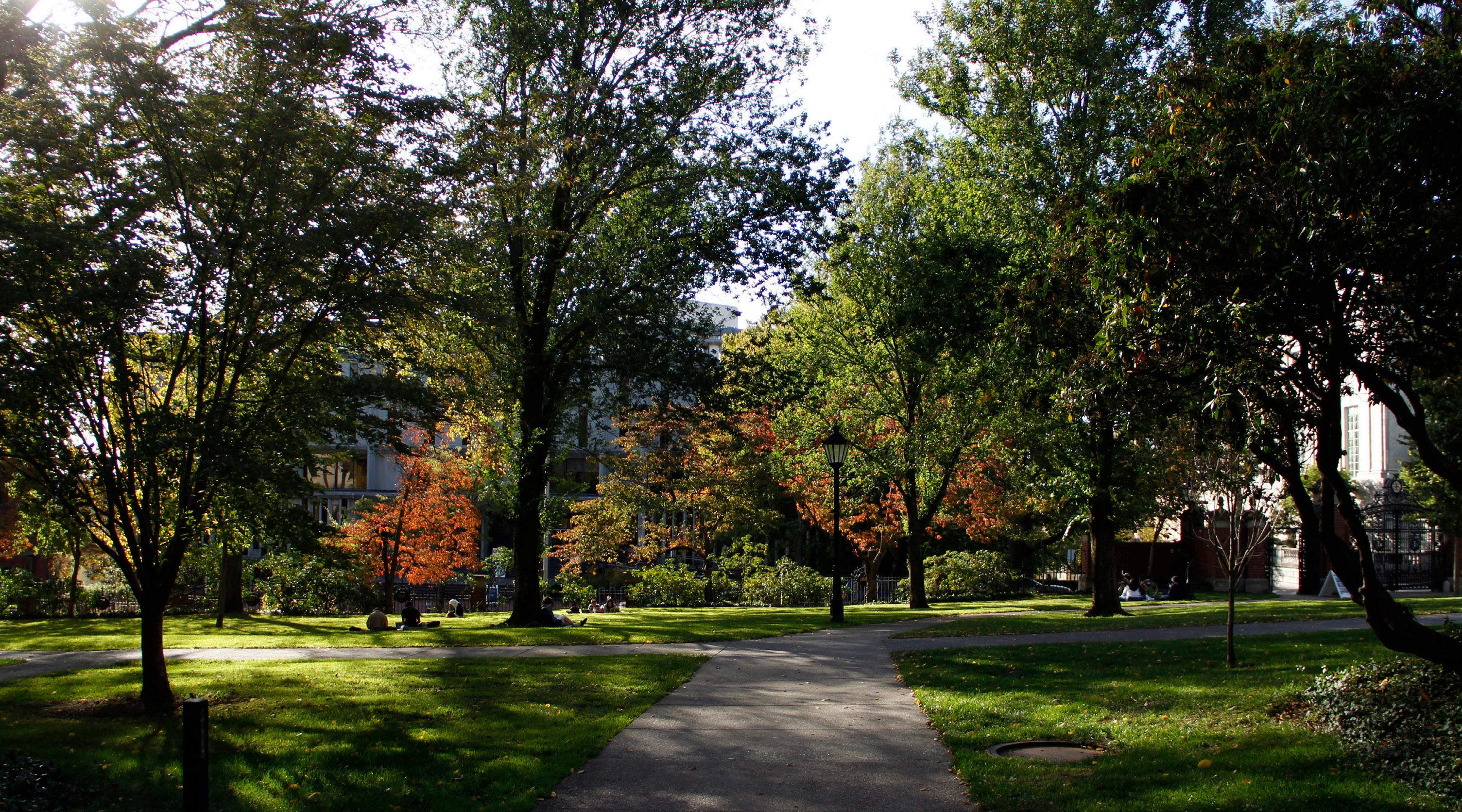
WEDNESDAY, NOVEMBER 23, 2022 8 THE BROWN DAILY HERALD | NEWS
SCIENCE & RESEARCH
U. researchers hope new method could make mental health exams more efficient
JENNIFER CHEN / HERALD
WHERE ARE YOU?
VICTORIA YIN / HERALD
















